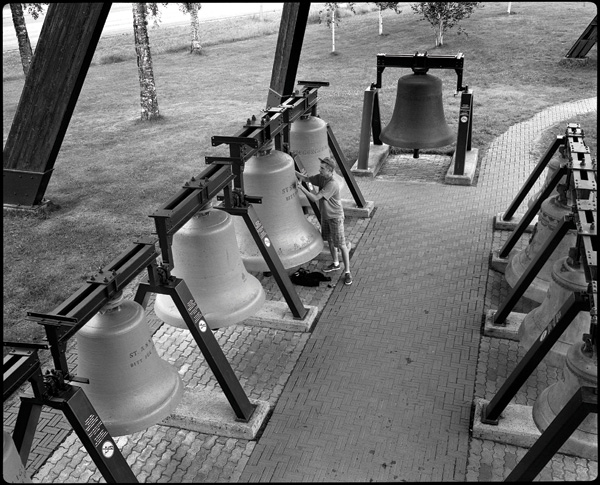Whilst most listeners will associate Finland with the prolific free-folk drift of the Fonal label and countless metal bands, Olli Aarni’s Ous Mal project filters a panoramic melancholy through deteriorating hip-hop beats and a disorientating mush of electronics, archaic samples and acoustic textures. Ous Mal’s 2010 release Nuojuva Halava may be cosmetically reminiscent of the current trend in hip-hop production towards thickly textured instrumental dreaminess, but this record exhibits none of the sex and gusto of your Flying Lotuses or Mount Kimbies: this is mournful night time music, instilled with just a modicum of hope to keep it from becoming dour.
Based in Helsinki, and a student of Finnish language, Aarni doesn’t have any ties with Finland’s famous free-folk scene, and nor does his music betray any direct connection. What it does share is a peculiarly surrealistic approach to sound design. If you’ve ever wanted to hear hip-hop completely removed from its urban sonic roots, you’d couldn’t do much better than to check out Nuojuva Halava, which follows a series of CD-Rs released on labels such as Under the Spire and Finnish label 267-Lattajjaa.

“I have some friends who make similar stuff, but I don’t see myself as a scene person,” Aarni says via Gmail chat on a “cold and windy” Helsinki night. “Most of my friends listen to different stuff than what I do.” Aarni does listen to a bit of modern hip-hop, with which he shares a minor affinity primarily for its sampling aesthetics. But he insists that he isn’t “concerned about how people locate me on the map of electronic music”.
“Decay is one of the main themes of the record,” Aarni says of Nuojuva Halava, “and some kind of presence of the past in everything. Maybe some kind of presence of different times in a single moment. I haven’t put it into words really, I try to capture and document that kind of feeling.” Aarni juxtaposes conventional acoustic instruments cello and guitar chief among them – with the disjointedness and syncopation of hip-hop. In a way, Nuojuva Halava sounds like many histories worth of Western classical music trying desperately to adjust itself into the framework of modern urban music; like its restless spectre is haunting an alien palette. “The live instrumentation sounds the way it does because I want it to fit into the mix,” Aarni says. “I use old and partially broken equipment for recording. I’m not sure that I feel truly nostalgic for the past, I just like the way the past seems (to us) now, in the present. It’s just an interpretation and I don’t know why it’s such a recurrent theme for me.”
Ous Mal’s aesthetic bears some similarities with the hauntological murmurings of William Basinski and The Caretaker. Often it feels like Aarni’s source material is breathing its last exhausted sigh before its inevitable relegation into a buried obscurity, but unlike those artists, Ous Mal isn’t exclusively ambient. There is a melodic and songwriterly sensibility here reminiscent of Boards of Canada and even, at a stretch, some of the more forward thinking Anticon producers.
“The [fact that]the past can’t be reached again allures people to try to do it, Aarni says when I suggest his approach is reminiscent of William Basinski and the Caretaker. “The sound quality of a recording itself can evoke a feeling of looking backwards. I like the crackle and hiss a lot just for the way it sounds.”
But all conceptual considerations aside, does it take a sad person to make music this melancholic? “Sometimes I’m feeling great and make something more upbeat, and then another day I’ll add another layer onto it that might have (a sense of) yearning. I maybe see it as more melancholic than sad, if there’s a difference. I want it to evoke feelings.
“I record music pretty much every day,” Aarni continues. “I was studying and doing normal stuff [when recording the album]. I think the thing that affected me the most during this recording was the weather – it was autumn and winter, the darkest part of the year.”
Aarni’s songwriting process varies from song to song. “I usually start by going through lots of records and cassettes, trying to find some sounds that fit together. Sometimes it’s a very long process, other times everything just clicks very fast. For example, I made the first version of “Marraskuu” (the opening track on Nuojuva Halava) in 2006 but I never felt it was complete, and then years later I finally added the missing parts to it. Other times it might only take a couple of days or so to record a piece. I get my records from flea markets and thrift stores, and I try to buy records I don’t know and that no one listens to anymore.”
Determining which disparate textures will ultimately gel together is probably the crucial consideration in Ous Mal’s music. At what point does Aarni feel certain that a cello or guitar line will compliment the crackling undertow? “Usually I try to hum some notes over a song. I like to add the kind of tone the song doesn’t already contain. For example sometimes I might find some samples that make a great texture but not much of a song. I avoid using live instruments, but sometimes a song needs that kind of push to be more exciting, or more complete.”
At this early stage in his recorded career, it will be interesting to witness Aarni’s development over the coming years, given the rate at which he’s already evolved since his early CD-R releases. Perhaps his next record will be conceived at the height of a northern summer, and we’ll get to see the joyous side of Aarni’s already well-honed aesthetic.
Ous Mal’s Nuojuva Halava is out now on Preservation



